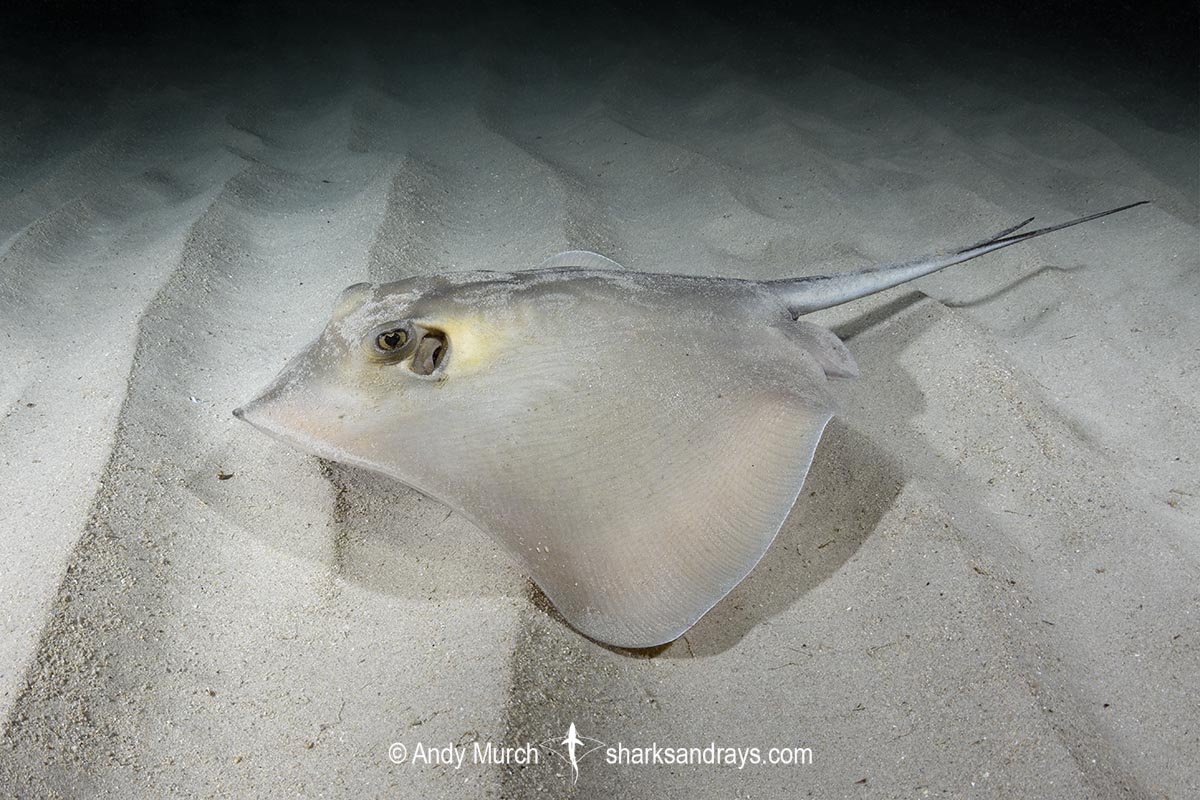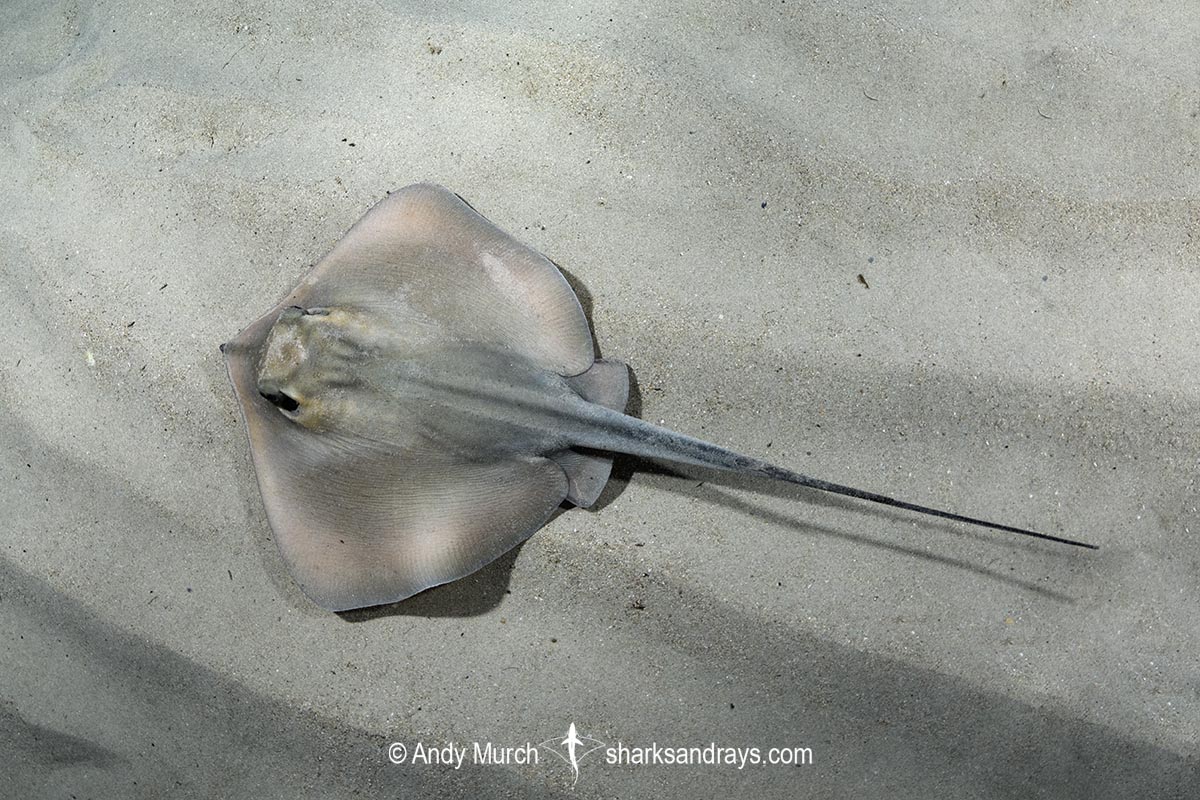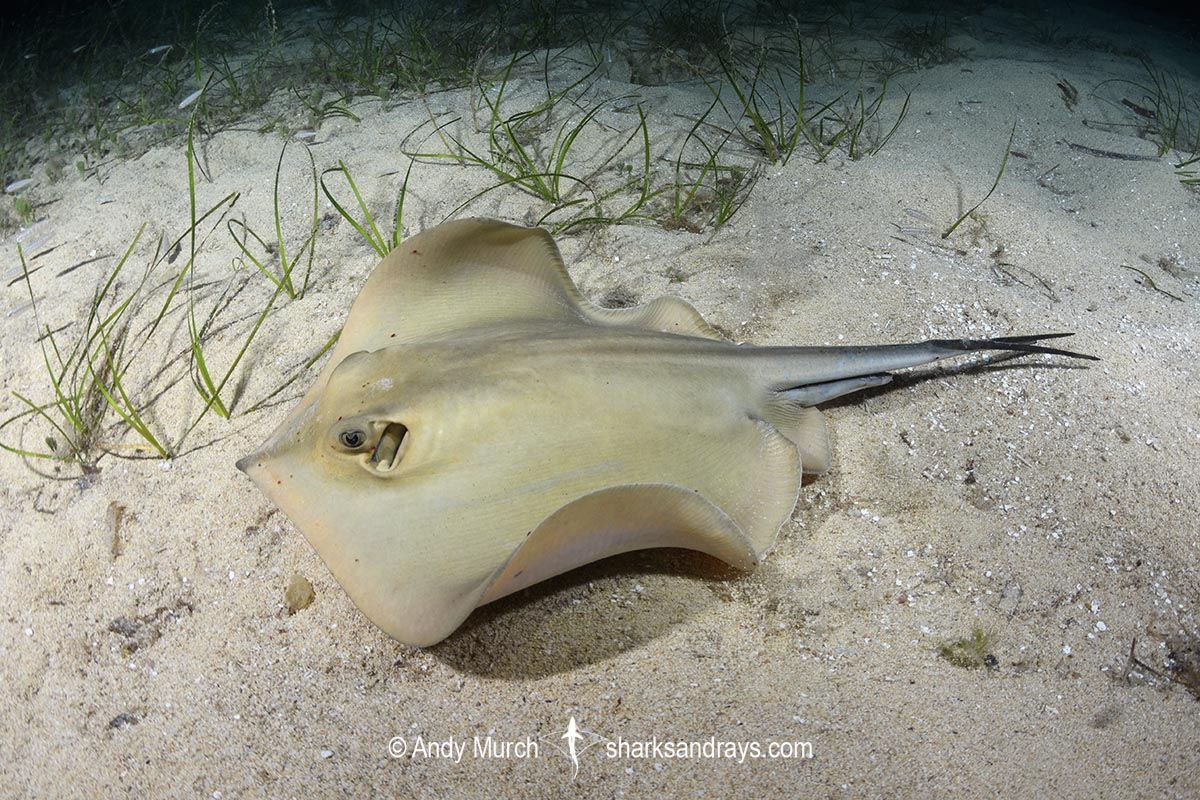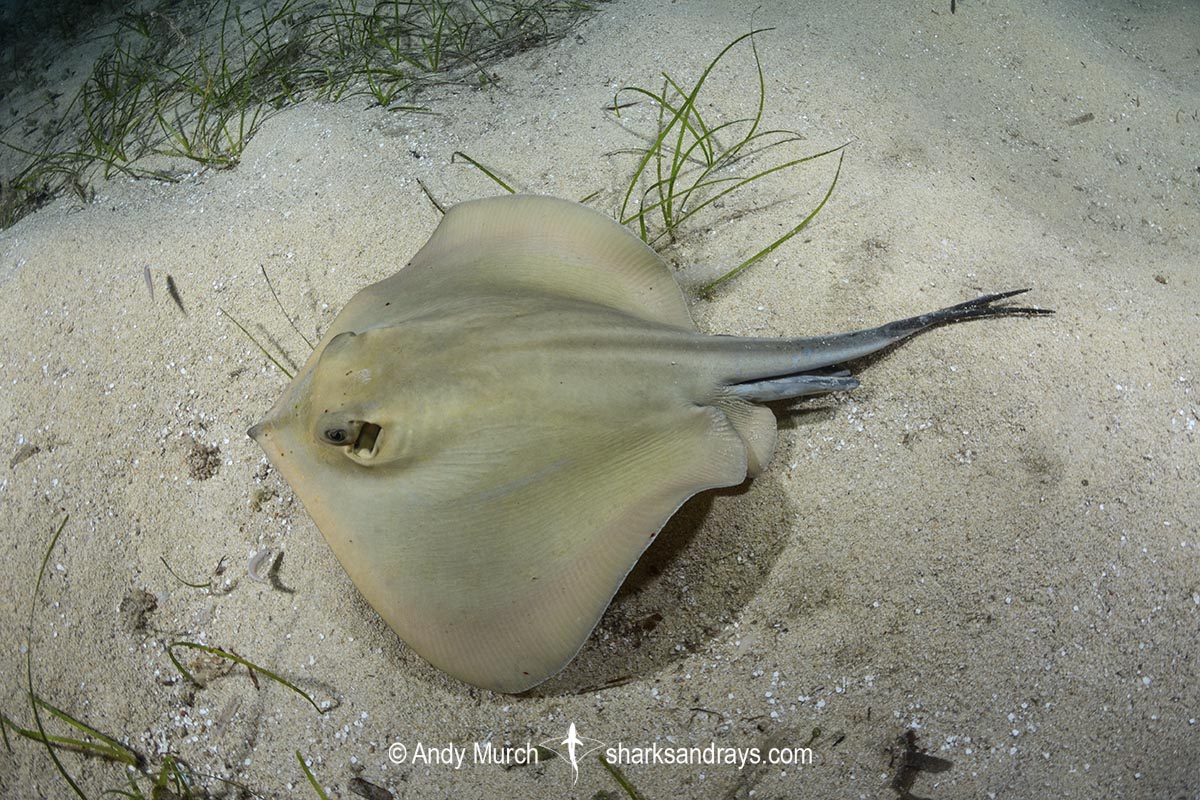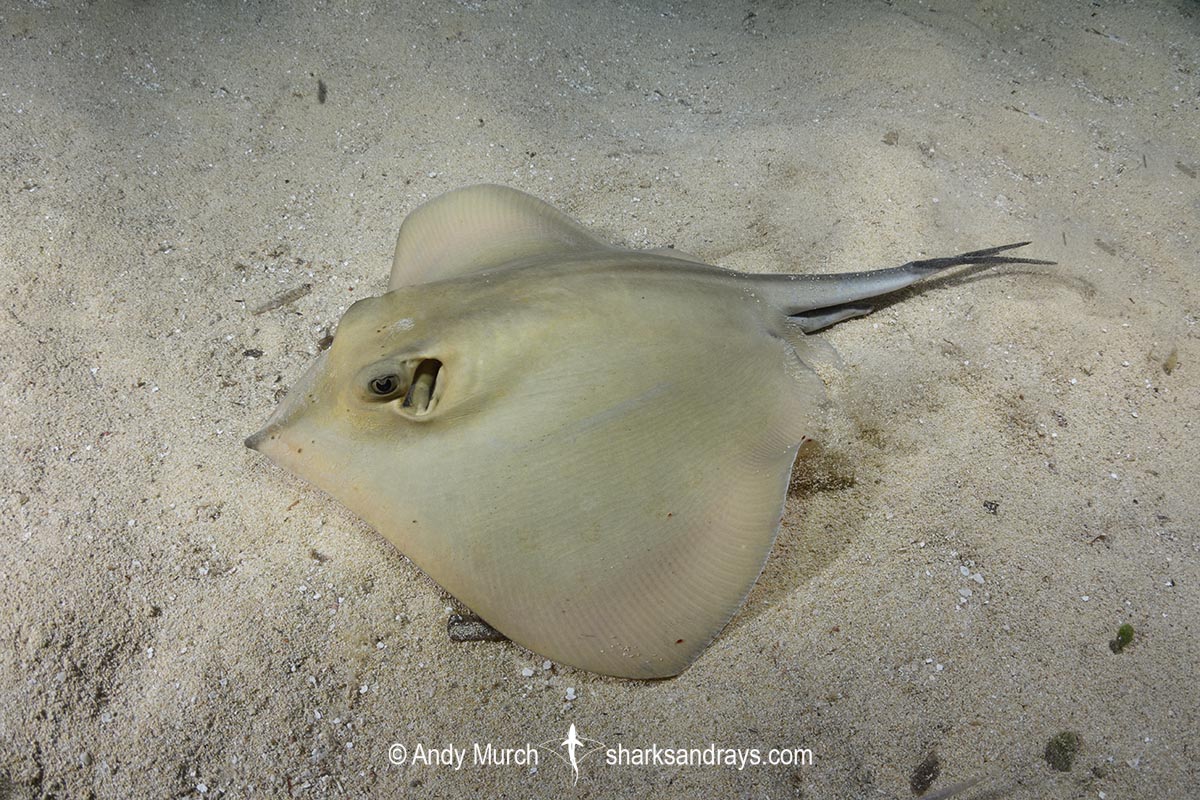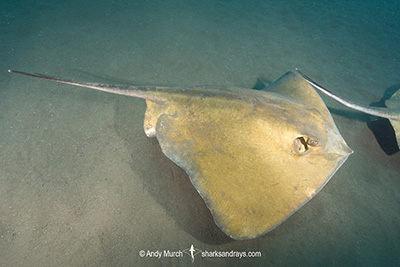Common name(s)
Common Stingray.
Binomial
Dasyatis pastinaca
Synonyms
Dasyatis pastinacus, Dasyatis pestinaca, Dasyatis ujo, Dasybatus pastinaca, Pastinaca laevis, Pastinaca olivacea, Raja pastinaca, Trygon pastinaca, Trygon vulgaris, Trygon vulgaris pastinaca.
Identification
A small to medium sized stingray with a kite-shaped disc that is slightly wider than long; disc width approximately 1.1-1.2 x length. Snout obtusely angular with a small, protruding tip. Anterior margins of disc straight or very weakly undulate. Pectoral fin apexes narrowly rounded or angular. Pelvic fins broad; posterior margins considerably posterior to pectoral disc margin. Pelvic fins apexes broadly rounded.
Eyes medium sized and slightly protruding. Snout length ~2 x combined eye and spiracle length.
Mouth usually contains 5 large oral papillae. Weak labial furrows around mouth. Lower jaw weakly sinuous; somewhat convex but slightly concave at symphysis. Small, skirt shaped nasal curtain with a fringed margin. Nostrils oval shaped.
Disc lacks dermal denticles. Larger females may have some centrally scattered thornlets on disc and tail. Tail broad and depressed at base, tapering to tail sting, then filamentous to tip. Tail length 1.3-1.5 x disc width. Dorsal finfold deeper than ventral finfold. 1-2 (usually one) long tail stings present.
Colour
Dorsum olive brown, grey brown, golden brown, or reddish brown, sometimes paler towards disc margin. Golden patch posterior to spiracles on paler individuals. Tip of snout dusky. Midline beyond nape dusky; fading to black on dorsal surface of tail. Tail very pale laterally. Ventrum white sometimes with a broad dusky or golden brown disc margin. Tail beyond sting and fin folds dark.
Size
Maximum disc width 68cm, possibly larger. Disc width at birth 8-12cm.
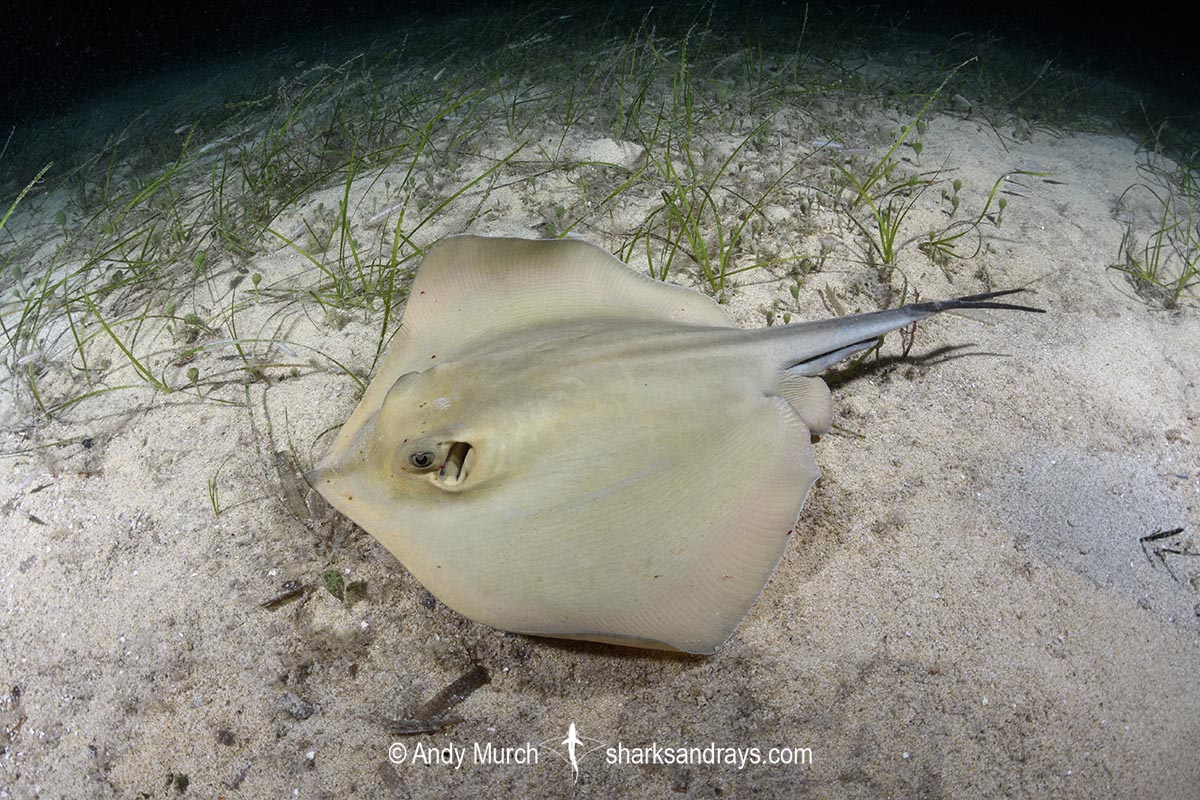
Conservation Status
VULNERABLE
although wide ranging, Dasyatis pastinaca is fished incidentally throughout much of its range and is consumed locally in the central eastern Atlantic.
Catch-per-unit effort estimates from demersal trawl surveys in Sardinia show no major reductions in population, but in the Adriatic and Black Sea, data from comparative trawl surveys (1948 and 1998) suggest that the common stingray may have decreased in abundance during this period.
Records from the eastern central Atlantic are unavailable, but continued intensive fishing pressure indicates that major declines have likely occurred in that region.
Although the common stingray also occurs as far north as Norway, species abundance is naturally low in that region.
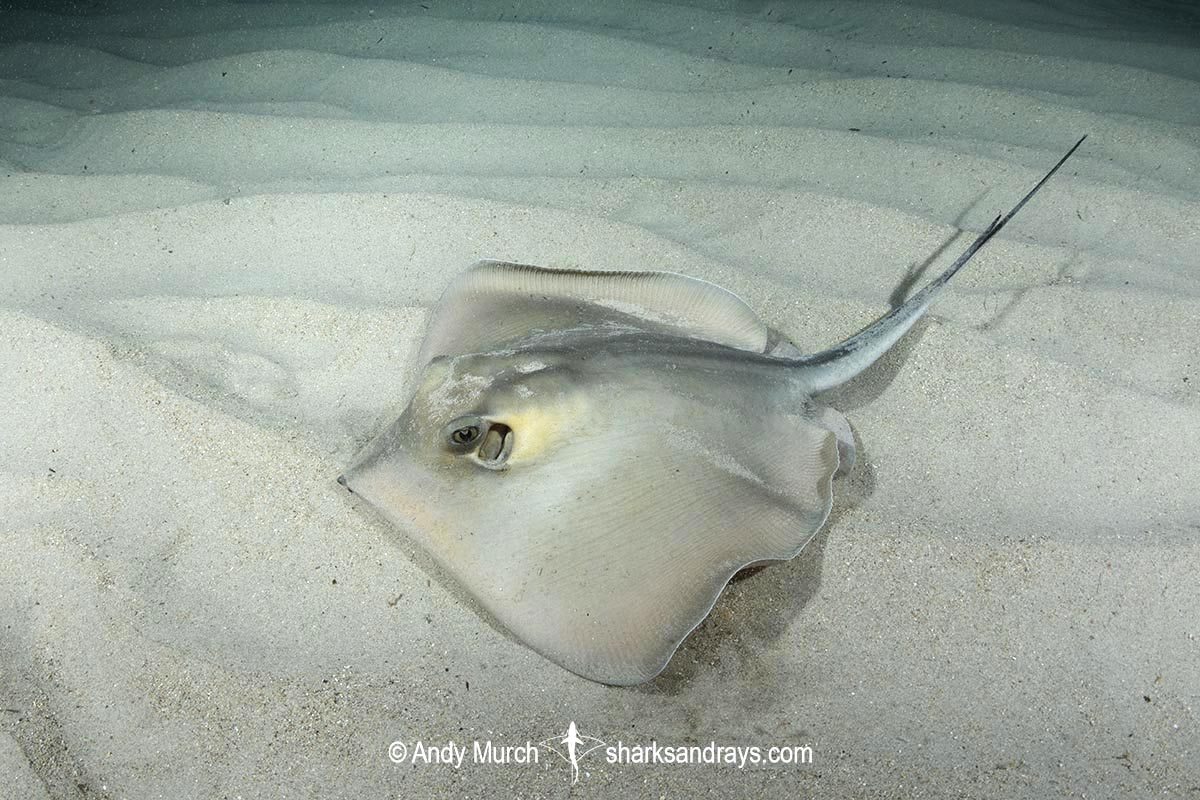
Habitat
Temperate to sub-tropical seas. On sandy and muddy substrates, sometimes adjacent to reefs. From 0-200m. Usually shallower than 50m.
Distribution
Widespread in the Eastern Atlantic Ocean and Mediterranean Sea. Found from the North Sea south of Norway to Angola, and coastally throughout the Mediterranean and Black Sea.
Specimens from Israel differ slightly and may represent a separate species.
Reproduction
Aplacental viviparity. 3-9 pups per litter.
Diet
Diet consists mostly of benthic crustaceans.
Behavior
Rests on open substrate by day. Actively forages on sand and around grass beds at night.
Reaction to divers
The common stingray is shy but approachable with non-aggressive movements. Generally bolts if approached too closely during the day, but may actually swim towards divers lights during night dives in some areas (e.g. Mallorca).
Diving logistics
During the summer from June to October, common stingrays are fairly abundant along the east coast of Spain and throughout the Balearic Islands. They are especially easy to see on sandy shore dives. In June I encountered them on every dive at Cabo de Palos, Playa Granadella, and at sites around Mallorca.
It is also possible to see this species in the Canary Islands but the closely related Tortonese’s Stingray is much more common there.
What’s new
View our full list of updates
Similar species
Tortonese’s Stingray A very similar, sympatric ray that can be distinguished by smaller size, golden brown dorsal coloration, and more acutely pointed snout with a smaller protruding tip.

